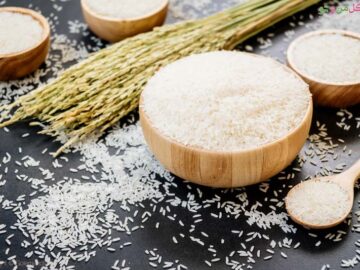Inflationary effects of increasing value added tax on imported agricultural goods
The global price trend of basic commodities is volatile and still increasing. In a country like Iran, which last year imported nearly 23 million tons of basic agricultural goods with a value of more than 16 billion dollars, the import of edibles is very important, and basically food constitutes a large part of consumers’ expenses, […]
The global price trend of basic commodities is volatile and still increasing. In a country like Iran, which last year imported nearly 23 million tons of basic agricultural goods with a value of more than 16 billion dollars, the import of edibles is very important, and basically food constitutes a large part of consumers’ expenses, so the cost reduction is to compensate for the increase. Cost of living is very high. Meanwhile, the price of basic goods plays an important role in increasing inflation and profound changes in the household consumption basket, and it determines the possible price direction of many other goods in the future. Commodity prices could add significant volatility to consumer price index (CPI) numbers, exacerbating the spiraling cost-of-living crisis among the bottom income deciles. At the same time, expenses such as household groceries, gasoline and gas are considered necessary expenses for consumers, and more justifiably, the increase in the price of basic food products attracts significant consequences among the public opinion of the society, and consumers in low income deciles, They suffer the most damage from the effects of inflation in the price increase of their consumption basket. However, Iran customs took an unexpected action on 12/28/1401 through a letter announcing a change in the value added tax of basic goods; It has been announced that from the beginning of 1402, the value added tax on the import of wheat, rice, oilseeds, all types of crude oil, legumes including lentils, peas, beans and mung beans, sugar, sugar, chicken meat, red meat and tea will be calculated at a standard rate of 9%. Be considered. Undoubtedly, this decision and the effects of its consequences, at this point in time and with this combination of consumer items, will have significant inflationary effects on the consumption basket of the country’s households, intensifying the domino effects of both “domestic and imported” food inflation, and will make people’s tables smaller. And in some items such as tea, it will encourage the increase of import smuggling. This decision has reduced the valuable element of protein in the consumption basket of low-income households – because it will increase the price of vegetable protein, legumes, and animal protein of all kinds of meat, especially imported frozen meat at the peak of inflationary expectations. On the other hand, it will have a deep strategic impact on the market of sugar-related industries. While most of the low-income deciles meet their need for protein from legumes, and the increase in the price of dairy and meat is not hidden from anyone. Even some pulses have increased by 120% compared to last year, the recent tax decisions seem strange. While in most forecasts; The upside risks to the base price of agricultural commodities are increasing and are mainly focused on the impact of China’s import policies, climate change, more unstable rainfall patterns and continued conflict in Ukraine, and global supply chain disruptions due to the Covid-19 pandemic. The recent tendencies of the Central Bank of America also indicate that the American policy makers have chosen between the two options of inflation control policy or choosing the economic recession adjustment policy, the anti-recession plan, which means the release of powerful dollar money to control the financial crisis ahead. For the global agricultural market and the international trade of basic agricultural commodities, which does 97% of its transactions in dollars; This choice means that at least in the next 6 months, we should not wish for a decrease in the price of basic agricultural goods in the international markets. On the other hand, global food inflation, higher interest rates, competition for greater influence on the markets, and the increase in the cost of financing for the purchase of basic goods, along with the delay in the date of cultivation of basic agricultural goods in the Caribbean, weigh on the market of these goods. While Argentina’s corn is smoking from the land and the Black Sea export corridor is still suffering from logistical bottlenecks and geopolitical disruptions caused by a war event, this decision is very unprofessional. Let’s not forget, if the US drought continues, the 2023-24 corn planting (one of the most traded futures contracts in the world) will likely be affected, leading to reduced production in the fertile plains and even exacerbating logistical issues. . The 2023 U.S. corn crop began with about 56 percent of its acreage in drought. This is higher than the general drought conditions at the beginning of 2022, which was about 46%. US corn is planted from (April to May) and harvested from (August to October), and weather conditions during that period, especially in the first half of the season, dictate the yield of the crop. But the price of wheat is much more vulnerable than the price of corn. Unlike corn, wheat has multiple growing seasons and has the potential to fluctuate more throughout the year. However, only about 10% of the world’s grain production is exported, so the imposition of a restriction by any exporter can have a large impact on international prices. Rice prices are also rising, a sign that the food inflation shock that has pushed millions into poverty is still reverberating even as wheat prices ease. Thai rice – the benchmark for Asian rice prices – has hit a two-year high. Strong demand is at the heart of these trade interactions, with some importers buying more grain to replace wheat after the war in Ukraine disrupted grain supplies.
این مطلب بدون برچسب می باشد.
















Leave a Reply